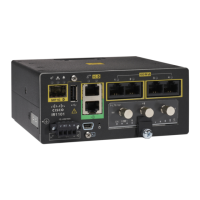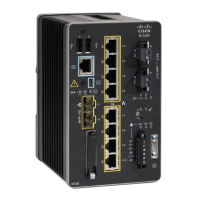transit LSR, which performs various checks, including one that determines if it is a transit LSR for the LSP
path. Each transit LSR also returns information related to the MPLS TE tunnel to see if the local forwarding
information matches what the routing protocols determine as the LSP path.
MPLS traffic engineering automatically establishes and maintains LSPs across the backbone. The path that
an LSP uses is determined by the LSP resource requirements and network resources, such as bandwidth.
For more information on MPLS traffic-engineering tunnels, refer to MPLS Traffic Engineering and
Enhancements.
Task ID
OperationsTask ID
read, writemonitor
Examples
The following example shows how to use the target traffic-eng tunnel command:
RP/0/0/CPU0:router# configure
RP/0/0/CPU0:router(config)# ipsla
RP/0/0/CPU0:router(config-ipsla)# operation 1
RP/0/0/CPU0:router(config-ipsla-op)# type mpls lsp trace
RP/0/0/CPU0:router(config-ipsla-mpls-lsp-trace)# target traffic-eng tunnel 101
Related Commands
DescriptionCommand
Configures an IP SLA operation.operation, on page 174
Schedules an IP SLA operation.schedule operation, on page 215
Tests connectivity in an LSP path in an MPLS VPN.type mpls lsp ping, on page 286
Traces the hop-by-hop route of an LSP path in an
MPLS VPN.
type mpls lsp trace, on page 288
Cisco IOS XR System Monitoring Command Reference for the Cisco XR 12000 Series Router, Release 4.1
266 OL-24735-01
IP Service Level Agreement Commands
target traffic-eng

